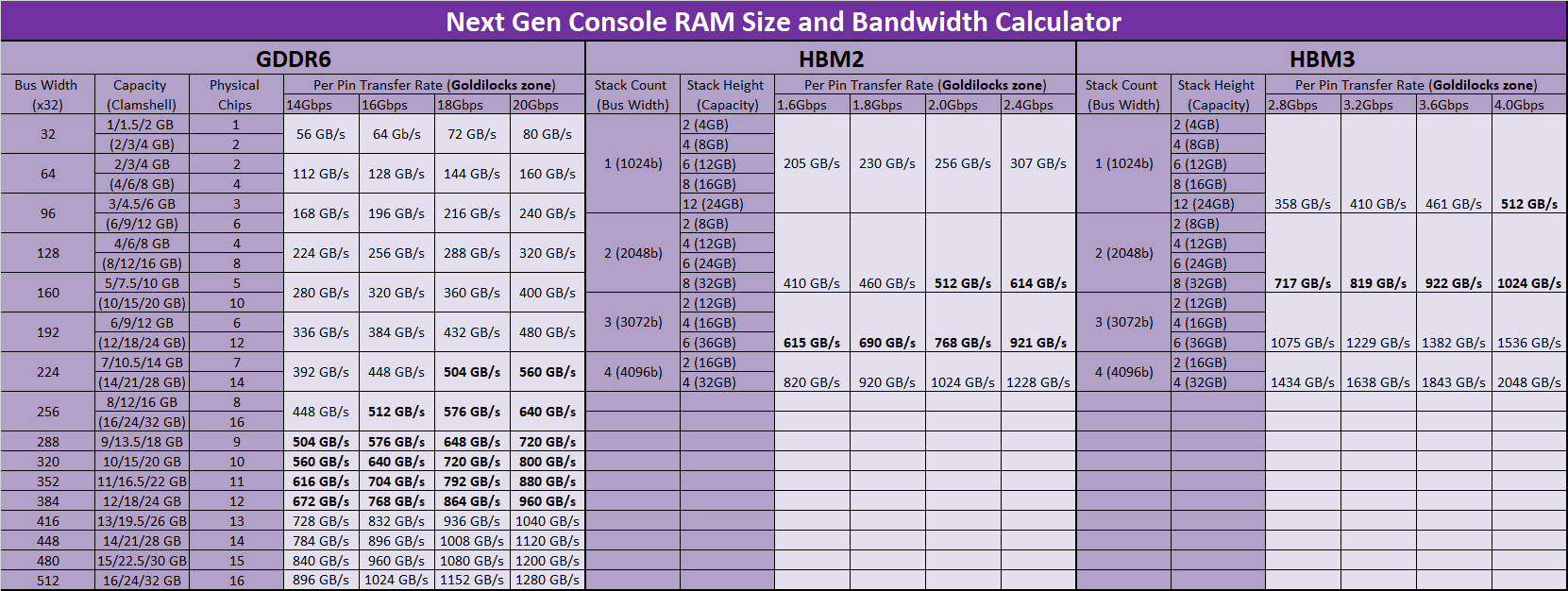Metal_Spirit
Regular
I've been thinking if a 8GB HBM2 would really be viable though? How many GDDR6 would it take to be equivalent?
Maybe this can help. It's from anexanhume!

I've been thinking if a 8GB HBM2 would really be viable though? How many GDDR6 would it take to be equivalent?

Handy! Good work @anexanhume.Maybe this can help. It's from anexanhume!

https://www.resetera.com/threads/xb...everyone-plays-we-all-win.94058/post-20204348
So Klobrille is admitting that Lockhart and Anaconda will use a Navi GPU?
I was expecting navi so much that it didn't even register that that was a confirmation (as much as believing this)What else would they be using as a base architecture? That's what AMD will have available during the assumed release time frame. Note that being based on the Navi architecture doesn't mean that the SoCs will just be straight copies of the PC parts AMD is developing. There will almost certainly be some degree of customization.
Actually it's "not before April 2020". Sony was talking about PS5 not launching in FY19.
I can only assume the remaining options are vega and other?What else would they be using as a base architecture?
I would've liked it to be different than navi, just for discussion.Also better they have the same architecture as Sony to be an open door for them if Sony want to move PS Now over to Azure.
I can only assume the remaining options are vega and other?
anything is possible with MS, I don't think it was blatantly assured of which direction they were going with next gen and how much cross over this server stuff might have on the console. Granted, the best probability was to go with Navi especially after seeing Sony declare Navi.
but when Google went Vega, and recently finding out that Navi is just the progression of Polaris - perhaps having more compute focused chip would net more benefit for MS when it comes to leverage compute on the web for idle time on those streaming SOCs for instance.
I wasn't entirely sure which way things could have gone.
Navi would be an evolution of what customization they have been working on with Polaris and X1X; so perhaps it makes more sense to continue from this platform instead of chasing profits for selling online compute.
Also better they have the same architecture as Sony to be an open door for them if Sony want to move PS Now over to Azure.
How about 7nm Slim/Pro/WiiEliteUVita. :>
Certainly a big piece of the puzzle; data transfer between different systems seems to be the most important topic that may not necessarily introduce additional costs like devoting more silicon to compute wouldMy guess is that the key to understand the "PS5" design is knowing how infinity fabric(2nd gen), HBCC and SSG technologies can work togheter on a single PCB.
